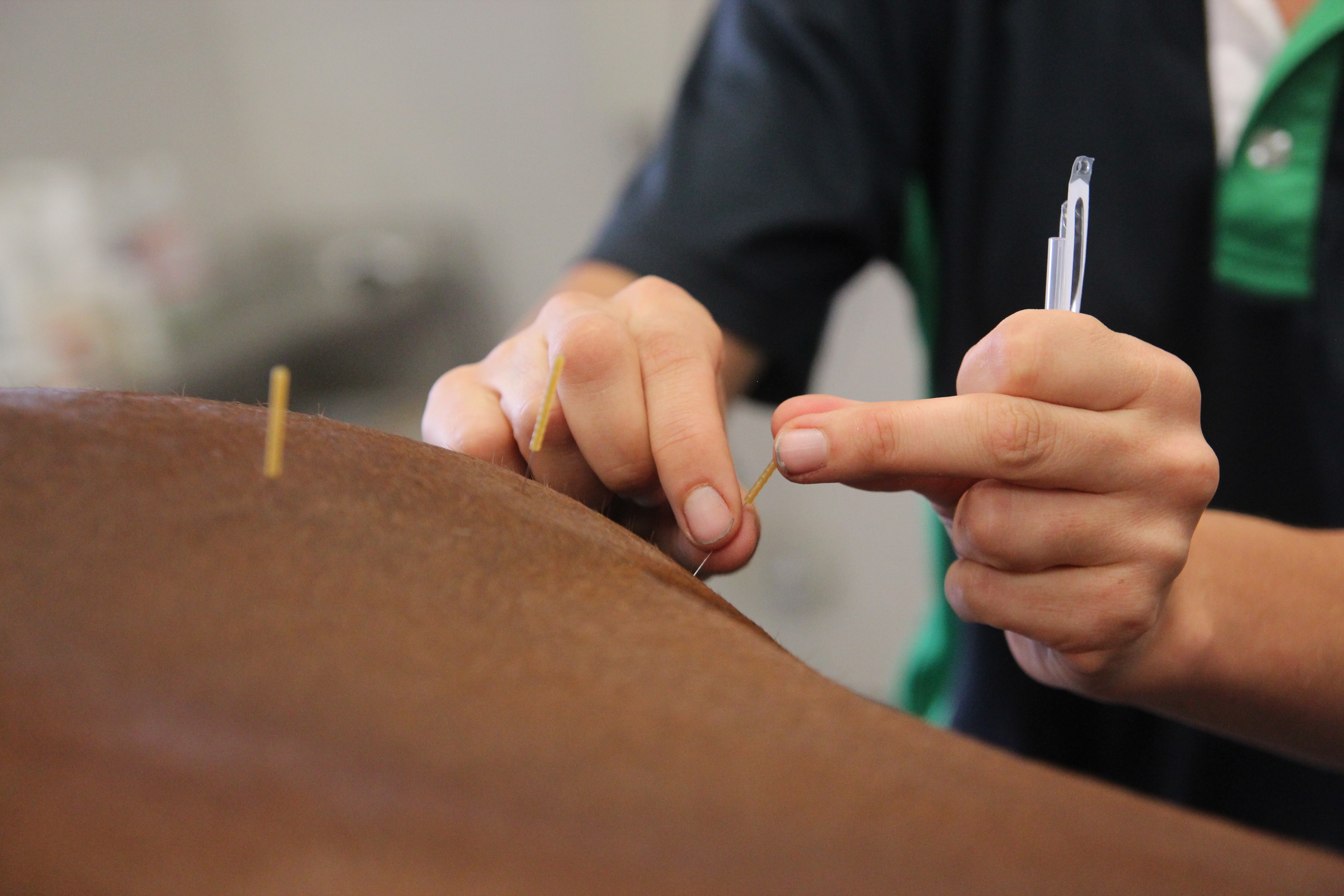Ensuring your horse is performing to his full potential
August 29, 2019
Equine veterinary hospital Comments Off on Standing tieback surgery for ‘roarers’
22
15
18
Aches and pains are something performance horses will experience throughout their lives.
A typical approach to equine care is to commence treatment once a problem (such as lameness) has arisen. The age old saying that prevention is better than cure could not be more applicable to keeping your horse performing to his full potential.
Acupuncture is an accepted form of complementary, holistic medicine for animals and is strongly supported in treating pain, speeding up recovery and increasing the overall performance in horses.
The Science
The insertion of acupuncture needles has been shown to activate the nervous system both centrally and periphally. Other physiological systems activated include the endocrine, immune and cardiovascular systems. Following needle insertion a local reaction occurs at the tissue level. Adjacent nerve fibers are stimulated which send an impulse to the spinal cord. Opiod is released in the spinal cord which assists in blocking pain, the impulse in the spinal cord travels to the brain. Changes in the brain include: changes in the limbic system which is responsible for activating pain and stress inhibition, and decreasing brain activity whilst awake and asleep. This explains the reasons why many owners often comment that one of the first changes that they see following an acupuncture treatment is that their horse
‘feels better’.
What is Acupuncture?
Acupuncture is a very ancient form of healing that predates recorded history. Acupuncture involves the insertion of fine needles into specific points on the body to achieve therapy and homeostasis. There are also other ways of stimulating acupuncture points including pressure, heat, electric currents, gold beads, laser and solutions such as saline and Vitamin B.
What does an Acupuncture examination involve?
1. Review of horses medical history including any treatments and responses
2. DAPE examination – Diagnostic acupuncture physical examination
3. Selection of acupuncture points based on the DAPE examination
4. Treatment protocol is established
How many treatments are required?
After the initial consultation Dr Marta Wereszka will discuss an individual treatment plan.
In most cases 1 treatment per week is recommended until the symptoms plateau.
Why are several treatments required?
Acupuncture utilises the horses own healing mechanism to aid recovery, this mechanism needs to be continually activated.
It is important owners realise acupuncture doesn’t cure the problem. At Camden Equine Centre a full lameness exam is carried out with the initial acupuncture consultation. Dr Marta Wereszka will then provide each patient with an individual treatment program.
What can be expected after Acupuncture treatment?
There are three common outcomes:
1 . There are no obvious changes in clinical signs but the patient generally appears brighter
2. The clinical signs appear to improve for 1-2 days then gradually worsen again (most common scenario)
3. The clinical signs get worse for up to 1 day and then rapidly improve. With subsequent treatments there is typically gradual improvement until complete recovery or a plateau at which no further improvement is seen.In conditions which have been going on for a period of time, subsequent treatments may be required in order to maintain the plateau.
Dr Marta Wereszka BVMA MS DACVS
Marta is a Specialist in Equine Surgery and in 2016
completed the Australian IVAS Veterinary Acupuncture course. Marta’s desire to become a qualified equine acupuncturist stems from hearing how her clients could first go to their chiropractor/masseuse/acupuncturist and only use a vet as a last resort. Marta felt that by being trained in both Eastern and Western medicine would allow her to offer her clients the best of both worlds and ensure that they receive the best possible treatment.
“It is important that both are used together and can work hand in hand as has been done in China for hundreds of years.”






0 Comments